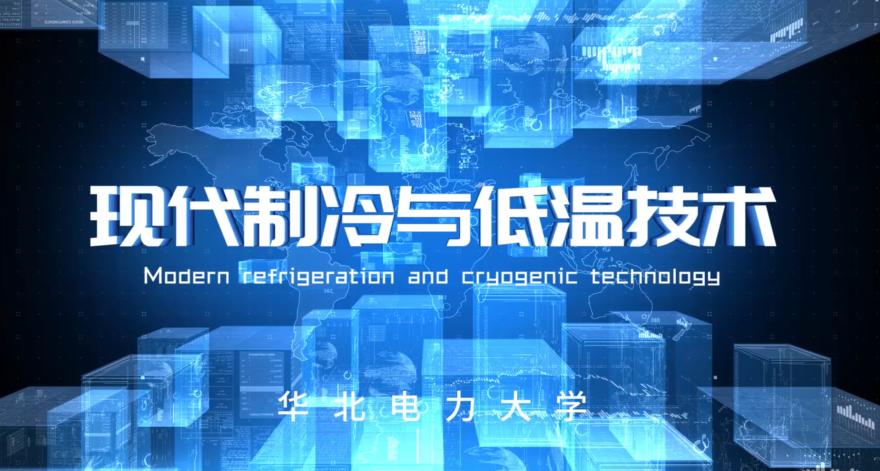
当前课程知识点:3ds Max: A Quick Start from Zero to One > Chapter 1: Getting Started > 1.4.1 Opening and Saving Files > 1.4.1
返回《3ds Max: A Quick Start from Zero to One》慕课在线视频课程列表
返回《3ds Max: A Quick Start from Zero to One》慕课在线视频列表
文件的打开和保存
在上一讲中
我们进行了
项目前的准备工作
这一讲呢
带大家了解
如何打开与保存文件
让你随时随地的
调入和保存需要的文件
还等什么呢
快来试试吧
一
新建场景
创造一个三维空间
在软件打开时
系统会自动创建一个
虚拟空间
让我们进行项目的制作
当然
你想手动创建一个
虚拟空间
可以使用文件菜单下的
新建
或使用快捷键
Ctrl+N来完成制作
二
打开场景
用不同的打开方式
让我们先打开一个场景
来看一看吧
如果近期使用过文件
通过打开最近选项
可以瞬间打开文件
如果3ds Max还没有启动
而自己又很熟悉
这个工程文件
怎么办呢
可以通过直接双击工程文件
来打开它
甚至可以直接把文件
拖拽到视口中
使用打开命令来载入文件
当然
如果根本不知道文件是啥
还是乖乖的使用
文件菜单下的
打开命令
以缩略图的形式进行查找
这样啊才会更方便
三
保存场景
方便后续的使用
项目进行到一半
突然有事可怎么办呢
使用文件菜单下的
保存按钮
或快捷键Ctrl+S
将工程文件
保存到电脑上
就可以下次使用了
可别小看了这个功能
大部分人啊
都会经常忘记
所以初学的你
一定要记住
没事的时候
就按这个Ctrl+S
锻炼一下手指
超越3D大神
指日可待哦
四
合并与导入
便于你整理MAX文件
如果我们有一个
模型素材
怎样与3ds Max的场景
进行整合呢
来看看文件的后缀吧
如果文件后缀是
.Max文件
证明此文件是由
自己亲妈3ds Max
所制作的
直接使用合并命令
根据提示进行操作
就可以了
但如果文件是
.Obj
.FBX
.DWG等
则说明文件啊
有可能是其他软件
所制作的
这个时候就需要使用
导入命令来解决了
当然
不是什么格式都可以往里塞
看看导入所支持的
三十种格式
支持的才能互导哦
如果你学会了导入
如何导出就不用我说了吧
相信你也已经学会了
五
文件归档
帮助你管理MAX文件
那么
如果小伙伴很喜欢
你做的场景
那该如何给他呢
或许你的第一个反应
就是将整个工程文件夹
都丢给他
或将场景另存给他
这个时候可要注意了
这都不是聪明的做法
那么
有没有更便捷的方法呢
其实
归档命令就可以解决了
归档命令就像是你的小管家
可以帮你收集整个场景中
散落在各个地方的关联数据
你只需要一个按钮
就可以享受VIP打包服务
轻松的将场景
传给你的小伙伴
而不用担心落下什么东西了
六
神奇的外部参照
将你和他的文件链接起来
这里偷偷告诉你1个小技巧
3ds Max也可以开启
多人协作的玩法哦
比如说
小王做好了一个模型
你负责整合到场景中
收到模型后
在参考中
打开外部参照对象窗口
勾选立刻更新
点击
从文件中创建外部参照记录
选择小王的模型
就可以放到场景中了
注意
这和导入是不一样的
只是文件创立了一个
链接方式
当你发现模型有问题时
可以让山那头的小王
进行修改
完成后进行保存
再发回给你
在这头的你呢
只需点击更新命令
刷新载入模型
问题就迎刃而解了
怎么样
是不是很神奇呢
好了
明白了文件的载入
保存
归档等方法后
我们开始基本操作的学习吧
还有更多的命令
需要你去征服和掌握呢
还等什么呢
快进入下一节课程吧
-Fast Understand of 3ds Max,Starting Your Virtual Journey
--Preface
-Preface
-1.1 How to get 3ds Max
--1.1 02
-1.1
-1.2 Introduction to the Interface of 3ds Max
--1.2 01
--3ds Max
-1.2
-1.3.1 Project Preparation 1: Set Up Project Folder
--1.3.1
-1.3.1
-1.3.2 Project Preparation 2:Initialization Settings
--1.3.2
-1.3.2
-1.4.1 Opening and Saving Files
--1.4.1
-1.4.1
-1.4.2 Basics Operation
--1.4.2
-1.4.2
-1.4.3 Advanced Operation
--1.4.3
-1.4.3
-1.5 General Hotkeys
--1.5
-1.5
-1.6 Creating Geometric Primitives
--1.6
-1.6
-2.1 3D Modeling Overview
--2.1
-2.1
-2.2 Three Useful Modeling Methods
--2.2
-2.2
-2.3 Boolean Modeling
--2.3
-2.3
-2.4.1 Spline Modeling 1:Spline Modeling Overview
--2.4.1
-2.4.1
-2.4.2 Spline Modeling 2: Modeling From a Spline
--2.4.2
-2.4.2
-2.4.3 Spline Modeling 3:How to Edit Spline Objects
--2.4.3
-2.4.3
-2.5.1 Polygon Modeling 1:Polygon Modeling Method
--2.5.1
-2.5.1
-2.5.2 Component Selection Techniques
--2.5.2
-2.5.2
-2.5.3 Polygon Modeling 3: 16 Polygon Modeling Commands
--2.5.3
-2.5.3
-2.5.4 Polygon Modeling 4: Subdivision Modeling
--2.5.4
-2.5.4
-2.5.5 Polygon Modeling 5: Attaching and Detaching
--2.5.5
-2.5.5
-2.6.1 Advanced Modeling Skills 1:“Stereoscopic” Modeling Method
--2.6.1 01
-2.6.1
-2.6.2 Advanced Modeling Skills 2:Box Modeling Method
--2.6.2
-2.6.2
-2.6.3 Advanced Modeling Skills 3:Deconstruction Modeling Method
--2.6.3
-2.6.3
-2.6.4 Advanced Modeling Skills 4:Problems to be Considered in Modeling
--2.6.4
-2.6.4
-3.1 Rendering
--3.1 02
-3.1
-3.2.1 Render Your First Work
--3.2.1 02
-3.2.1
-3.2.2 Arnold Render Set Up
--3.2.2 01
-3.2.2
-3.2.3 Introduction to the Arnold Renderer
--3.2.3
-3.2.3
-3.2.4 Arnold Renderer 1: Sampling
--3.2.4 02
-3.2.4
-3.2.5 Arnold Renderer 2: RayDepth and Filtering
--3.2.5 02
-3.2.5
-3.3.1 What is Light?
--3.3.1 02
-3.3.1
-3.3.2 Light and Color
--3.3.2 02
-3.3.2
-3.3.3 Light and Shadow
--3.3.3 02
-3.3.3
-3.3.4 Produces Soft Shadows and Fast Shadow
--3.3.4 02
-3.3.4
-3.3.5 Six Types of Lighting
--3.3.5 01
-3.3.5
-3.4.1 Arnold Light Types
--3.4.1 01
-3.4.1
-3.4.2 Arnold Light Parameters
--3.4.2 01
-3.4.2
-3.4.3 Color Temperatures and White Balance
--3.4.3 01
-3.4.3
-3.5.1 Three-point Lighting Method
--3.5.1
-3.5.1
-3.5.2 Indoor Light Lecture 1: Make a Simple Night
--3.5.2
-3.5.2
-3.6.1 Advanced Skill 1:Rendering Tips
--3.6.1
-3.6.1
-3.6.2 Advanced Skill 2:The Normals and the Smooth Group
--3.6.2
-3.6.2
-4.1 Learn About This Chapter in Four Minutes
--4.1
-4.1
-4.2.1 How to Open the Material Editor?
--4.2.1
-4.2.1
-4.2.2 Using Physical Materials
--4.2.2
-4.2.2
-4.2.3 Three Assistants of the Material
--4.2.3
-4.2.3
-4.2.4 Create a Simple Material
--4.2.4
-4.2.4
-4.3.1 Using maps to Creat Different Looking
--4.3.1
-4.3.1
-4.3.2 Bitmap Node:A Small Node With Virtues
--4.3.2
-4.3.2
-4.4.1 UVW Mapping Method 1:Methods of Locking the Map
--4.4.1
-4.4.1
-4.4.2 UVW Mapping Method 2: UV Overlays
--4.4.2
-4.4.2
-4.4.3 Unwrap UVW 1: Basic of Unwrap UVW Modifier
--4.4.3
-4.4.3
-4.4.4 Unwrap UVW 2: Projection
--4.4.4
-4.4.4
-4.4.5 Unwrap UVW Part 3: Powerful UV Editor
--4.4.5
-4.4.5
-5.1 Animation Overvie
--5.1
-5.1
-5.2.1 3ds Max Animation
--5.2.1
-5.2.1
-5.2.2 Making Animation More Interesting Principle 1: Time and Space
--5.2.2
-5.2.2
-5.2.3 Making Animation More Interesting Principle 2: Slow Motion (slow-mo)
--5.2.3
-5.2.3
-5.2.4 Making Animation More Interesting Principle 3: Squash and Stretch
--5.2.4
-5.2.4
-5.3.1 Animation Technique 1: Parent-Child Relationship
--5.3.1
-5.3.1
-5.3.2 Animation Technique 2:Loop Animation
--5.3.2
-5.3.2
-5.4.1 Techniques of Using the Camera
--5.4.1
-5.4.1
-5.4.2 The Safeframe Cannot Be Ignored in the Camera
--5.4.2
-5.4.2
-5.4.3 Camera Movement
--5.4.3
-5.4.3
-5.4.4 Following Shot
--5.4.4
-5.4.4
-6.1 Rendering a VR Panorama With Arnold
--6.1
-6.1
-6.2 Fast Implementation of VR Interaction
--6.2
-6.2
-6.3 Fast Implementation of AR Interaction
--6.3
-6.3
-6.4 Friends of 3ds Max
--6.4
-6.4
-6.5 Self Learning and Improvement Methods
--6.5
-6.5
-6.6 Methods of Obtaining Resources
--6.6
-6.6
-7.1 PBR Technology Introduction
--7.1
-7.2 Toolbag PBR Real-time Rendering
--7.2
-7.3 Substance Painter PBR Painting
--7.3
-Shortfilm Casestudy 1:The Weapon Used in PUBG (PlayerUnknown's Battlegrounds)
--Microfilm Course 1:The Weapon Used in Eating Chicken
-Shortfilm Casestudy 2:Production experience of Classic of Mountains and Seas
--Microfilm Course 2:Production Process of Shanhaijing
-Examination


